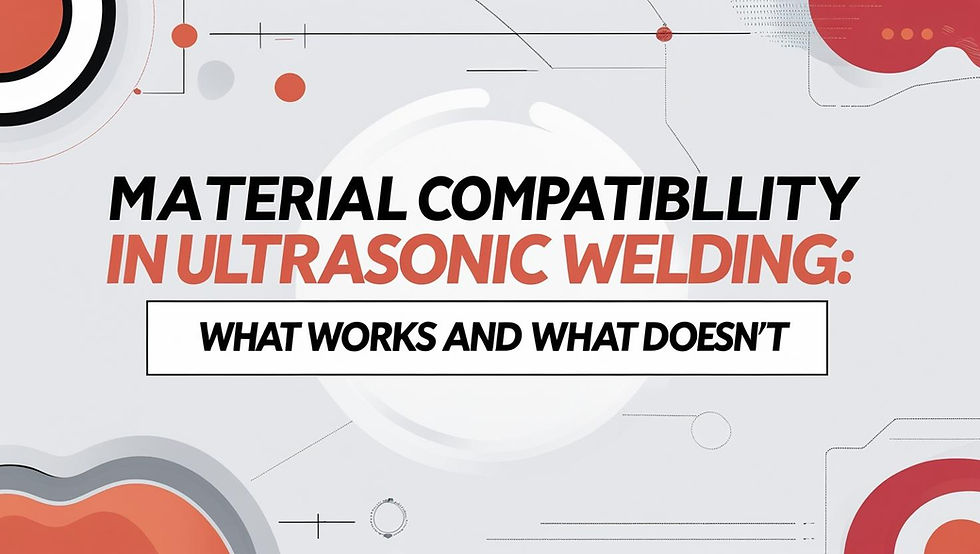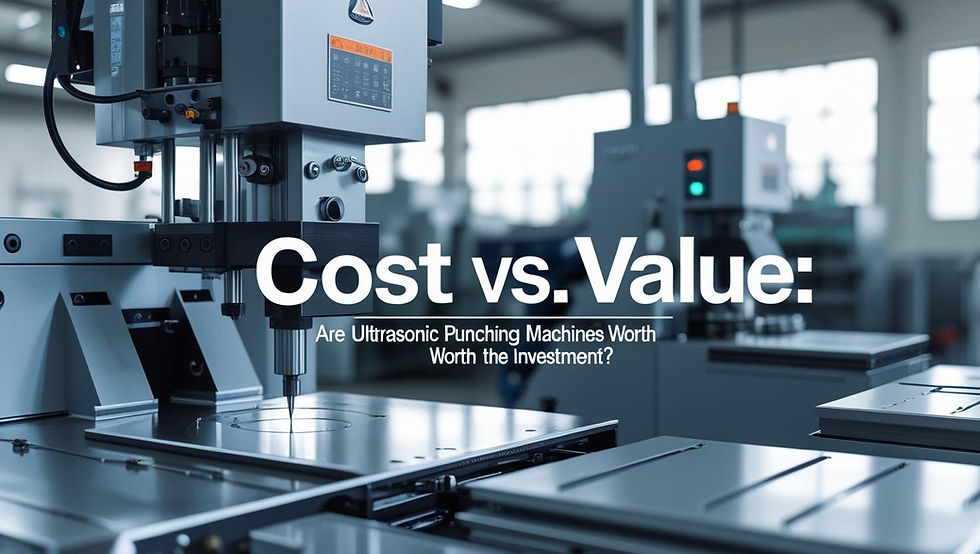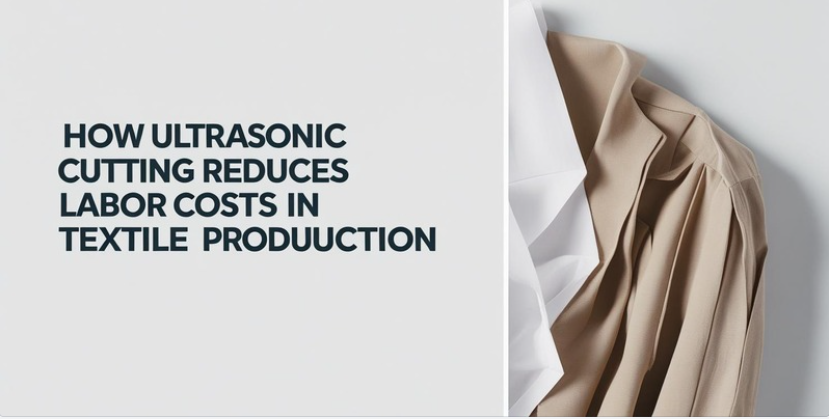Material Compatibility in Ultrasonic Welding: What Works and What Doesn’t
- ztzgsteeltech
- Jul 23
- 4 min read

Ultrasonic welding is a fast, clean, and efficient method for joining materials using high-frequency mechanical vibrations, primarily in plastics and some metals. However, not all materials are suitable for ultrasonic welding. Material compatibility is the make-or-break factor that determines whether you'll get a strong, consistent bond or a failed weld.
This guide dives deep into the best and worst materials for ultrasonic welding, offering manufacturers, engineers, and designers clear insights on what works, what doesn’t, and why.
How Ultrasonic Welding Works (A Quick Recap)
Ultrasonic welding joins materials by applying 20–40 kHz high-frequency vibrations under pressure to the contact surfaces. These vibrations cause localized frictional heat, softening the material and allowing it to fuse together without melting the entire part.
This method is fast, clean, and energy-efficient, but it only works if the materials involved respond appropriately to ultrasonic energy.
Key Factors That Determine Material Compatibility
Before we list materials, let’s understand what makes a material suitable for ultrasonic welding:
Thermoplastic Behavior: Can the material soften and re-solidify?
Melt Temperature: Similar melt temperatures improve bonding.
Amorphous vs. Semi-Crystalline: Amorphous plastics tend to weld better.
Surface Energy: Affects adhesion and friction during vibration.
Density and Stiffness: Impact how vibrations travel through the material.
Best Materials for Ultrasonic Welding (What Works)
Amorphous Thermoplastics
These plastics have a random molecular structure, allowing for better energy absorption and easier melting.
Material | Weldability | Applications |
ABS (Acrylonitrile Butadiene Styrene) | ✅ Excellent | Automotive parts, electronics housings |
Acrylic (PMMA) | ✅ Excellent | Displays, LED diffusers, optical parts |
Polycarbonate (PC) | ✅ Excellent | Medical devices, safety equipment |
Polystyrene (PS) | ✅ Excellent | Disposable products, toys |
SAN (Styrene Acrylonitrile) | ✅ Excellent | Household appliances, battery casings |
These materials offer reliable bonding with minimal tuning.
Some Semi-Crystalline Thermoplastics
Semi-crystalline plastics are harder to weld due to their ordered molecular structure, but many still perform well when parameters are properly adjusted.
Material | Weldability | Applications |
Polypropylene (PP) | ✅ Good | Medical packaging, automotive trims |
Polyethylene (PE) | ✅ Good | Packaging films, containers |
Nylon (Polyamide) | ✅ Good | Gears, bearings, and consumer electronics |
PET (Polyethylene Terephthalate) | ✅ Moderate | Bottles, textiles, and food packaging |
With correct amplitude, pressure, and weld time, these materials can yield strong ultrasonic welds.
Challenging or Incompatible Materials (What Doesn’t Work)
Thermosetting Plastics
Thermosets cannot be melted once formed, making ultrasonic welding impossible.
Material | Weldability | Reason |
Epoxy | ❌ Not Suitable | Cures permanently, does not soften |
Melamine | ❌ Not Suitable | Cross-linked polymer resists heat |
Bakelite | ❌ Not Suitable | Very brittle and heat-resistant |
Natural Materials and Composites
These materials don’t respond predictably to ultrasonic energy or can degrade during welding.
Material | Weldability | Reason |
Wood | ❌ Not Suitable | Burns or fractures under heat |
Cotton or Wool | ❌ Not Suitable | Natural fibers lack melt behavior |
Thermoplastic composites | ⚠️ Inconsistent | Depends on the matrix and fiber content |
Plastics with Fillers or Glass Reinforcements
Fillers (glass, talc, carbon) can disrupt energy transfer and cause brittle welds.
Material | Weldability | Consideration |
Glass-filled Nylon | ⚠️ Limited | May require a special horn design |
Carbon-filled PP | ⚠️ Limited | Can lead to incomplete fusion |
Metals
Ultrasonic welding of metals is possible but only with specialized ultrasonic metal welding machines, not standard plastic welders. For best quality machines visit brands like ZrinTech that provide premium quality machines.
Material | Weldability (Metal Welding) | Applications |
Aluminum | ✅ Yes (Metal Welder) | Battery terminals, automotive wiring |
Copper | ✅ Yes (Metal Welder) | Circuitry, EV battery tab welding |
Steel or Iron | ❌ Not Ideal | Too dense, energy absorption is poor |
Weld Compatibility Chart: At a Glance
Material | Compatible with Ultrasonic Welding? |
ABS | ✅ Excellent |
PC | ✅ Excellent |
Nylon | ✅ Good |
PP | ✅ Good |
PE | ✅ Good |
PMMA (Acrylic) | ✅ Excellent |
Wood/Cotton/Wool | ❌ Not Compatible |
Epoxy/Bakelite | ❌ Not Compatible |
Aluminum (Metal Welding) | ✅ With Special Equipment |
Glass-Filled Composites | ⚠️ Limited Compatibility |
Tips for Ensuring Material Compatibility
Match Melt Temperatures: When welding two different plastics, ensure their melt points are within 30°C of each other.
Use Compatibility Charts: Many manufacturers offer welding compatibility matrices.
Perform Weld Trials: Always test unfamiliar materials before production.
Control Process Settings: Adjust frequency, amplitude, and weld time for optimal bonding.
FAQs
Can I weld different plastics together?
Only if they are chemically similar and have close melting points, for example, ABS and PC can sometimes be welded together.
What’s the easiest plastic to weld ultrasonically?
ABS, due to its amorphous structure and predictable melt behavior.
Why doesn’t wood or cotton work with ultrasonic welding?
They don’t melt, they burn or char under frictional heat.
Can ultrasonic welding be used on reinforced plastics?
Yes, but it requires fine-tuning and may produce weaker welds due to fillers.
Do all ultrasonic welding machines work with metals?
No. Standard machines are for plastics. Metal ultrasonic welding requires higher energy and specific equipment.
Is ultrasonic welding eco-friendly?
Yes. It uses no adhesives, solvents, or external heat sources, reducing energy and waste.
Conclusion
Material selection is the most critical factor in ultrasonic welding success. While plastics like ABS, PC, and nylon offer excellent results, natural materials and thermosets simply won’t work.
Understanding the chemical, thermal, and structural behavior of your chosen material is essential to achieving reliable, consistent ultrasonic welds. Buy the latest machines from an ultrasonic welding machine distributor to get the best machines delivered anywhere.
If you're planning to adopt ultrasonic welding in your production line, this compatibility knowledge will save you time, cost, and countless headaches.



Comentários